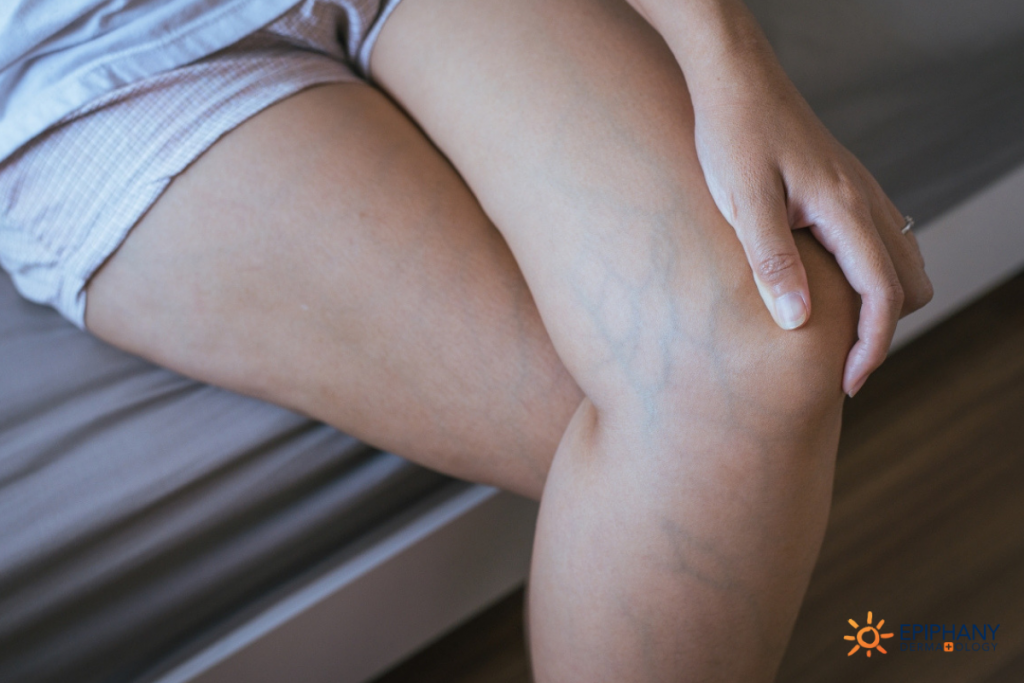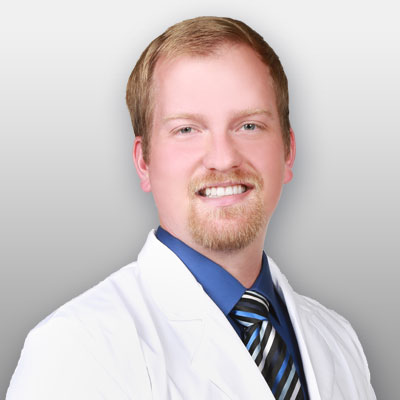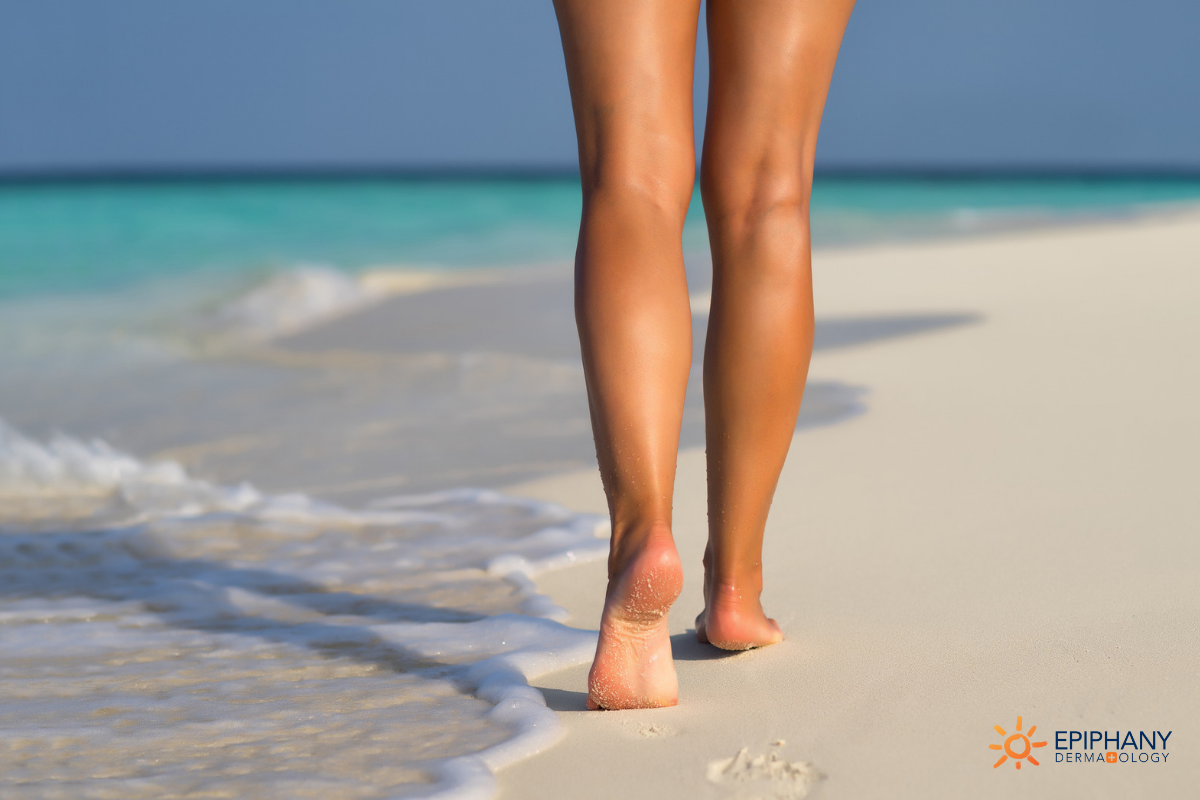Have the veins in your legs started to become more obvious? Are you ready to explore your options for helping them fade?
Whether visible veins have been an on-going issue or you’re just starting to notice them, there are ways to treat spider veins and varicose veins. But first, let’s look at what causes these veins and what makes them so noticeable.
How To Tell The Difference in Spider Veins vs. Varicose Veins
The first step in dealing with your veins is knowing the difference in the type of veins you’re seeing: spider veins vs. varicose veins.
Spider veins appear towards the surface of your skin. They look like a spider web, with finger-like projections branching out. These veins at the surface supply blood to the skin and other superficial areas.
Varicose veins are deeper. When they become noticeable, they begin to pop out — giving the vein a 3D appearance. These veins supply blood to deep muscle tissue, so they’re bigger. That means when they become visible, they’re more obvious.
What Causes Spider Veins vs. Varicose Veins
Although spider veins and varicose veins look different, they show up for the same reasons.
Our veins work to pump blood back to the heart. Because there’s no oxygen in the blood, it’s a blue color. This is why our spider and varicose veins appear with a bluish-green hue — they’re carrying blue blood through the body.
We don’t get more veins as we get older and the color of our veins doesn’t change — we just start to see them more.
As we age, we notice more veins for two reasons: damaged skin and aging valves.
The sun photo-ages the skin. It thins it out and breaks it down, making the skin more transparent. As this happens, we see through our skin and notice more spider veins and varicose veins.
Also, the older we get, the more likely our valves will malfunction. Veins are constantly fighting gravity as they return blood to the heart. Through wear-and-tear, the valves begin to leak. Over time, gravity begins to pull the blood back, stretching out the veins and allowing pressure to build. That’s when you notice the particularly large varicose veins. And since your skin is thinning, you see them even more clearly.
How to Treat Spider Veins vs. Varicose Veins
Although spider veins and varicose veins are caused for similar reasons, spider veins are less serious. They stay towards the surface of the skin and usually don’t result in more serious problems. If people are unhappy with the appearance of their spider veins, they can visit a vein specialist to talk about sclerotherapy or laser treatment options.
Varicose veins can become more serious. These veins become larger because of too much pressure within the veins. As they protrude, they’re more easily injured. It’s common for patients with varicose veins to catch a corner wrong resulting in a cut that won’t stop bleeding. To help protect the veins, we recommend patients with large varicose veins wear compression socks to provide a positive pressure on the vein and help prevent injury.
Eventually, varicose veins can result in increased pain, discomfort, and swelling. They can lead to conditions such as fat necrosis, stasis dermatitis, or a superficial bacterial infection called cellulitis that requires antibiotic and steroid treatment.
Varicose veins are also associated with a significant increased risk of having a deep vein thrombosis (DVT) — a blood clot in the deep veins that can cause life-threatening problems if it travels to the heart causing a pulmonary embolism (PE). If you notice painful varicose veins, consult with a medical provider to check for symptoms of further complications.

Who Gets Spider Veins vs. Varicose Veins
Everyone has veins and they become more noticeable as we age and our skin thins. The more sun-damage you have, the earlier you’ll notice them — particularly spider veins.
Varicose veins, however, are most common in people dealing with obesity or heart issues. Excess weight creates more pressure on the legs. A weak heart means the blood isn’t pumping efficiently, and pressure is building. When there’s too much pressure on the vein, it’s likely to bulge and leak.
Think of veins like a water hose. If there’s too much pressure, it bulges out and eventually breaks. Veins work the same way. The veins that protrude are doing so because the body has put too much pressure on them.
Prevention for Spider Veins vs. Varicose Veins
While spider veins and varicose veins are common, we can take steps to keep them to a minimum.
Always wear sunscreen. Yes, dermatologists recommend sunscreen for everything — that’s because it matters. Sun protection works to keep your skin as healthy as possible — preventing extensive sun damage and thinning skin.
But vein prevention goes a step further. Maintain a healthy diet and exercise to keep your weight under control and your heart in good health. A good strong heart keeps blood pumping and prevents the build-up of pressure. Keeping off extra weight (or losing weight) reduces unnecessary pressure on the veins that cause protrusion. Keep visiting your general family practitioner to make sure you have a good strong heart that can actually pump blood back to the heart, so that veins are working as efficiently as possible.
Once you have noticeable veins, you’re more prone to continue to have them — but if you can create a lifestyle that’s healthier, veins will be easier to manage and they may fade in appearance. Even if you have stasis dermatitis, which is caused by too much pressure and too much blood leaking out of weakened veins, a good healthy lifestyle can make a huge difference. Don’t underestimate the positive effects from diet and exercise.
Worried about your veins? Talk to your dermatologist on your next visit. They’ll be able to advise you about what types of veins you have and recommend a vein specialist if you’re ready for treatment.

Wesley Bull is a nationally certified physician assistant in Stephenville and Brownwood, TX with over 3 years of experience in family practice and a passion for medical dermatology. Wesley is devoted to providing comprehensive skincare to his patients, including general and surgical dermatology. A native Texan, he enjoys the outdoors and spending time with his wife Lesslie and their two children.

